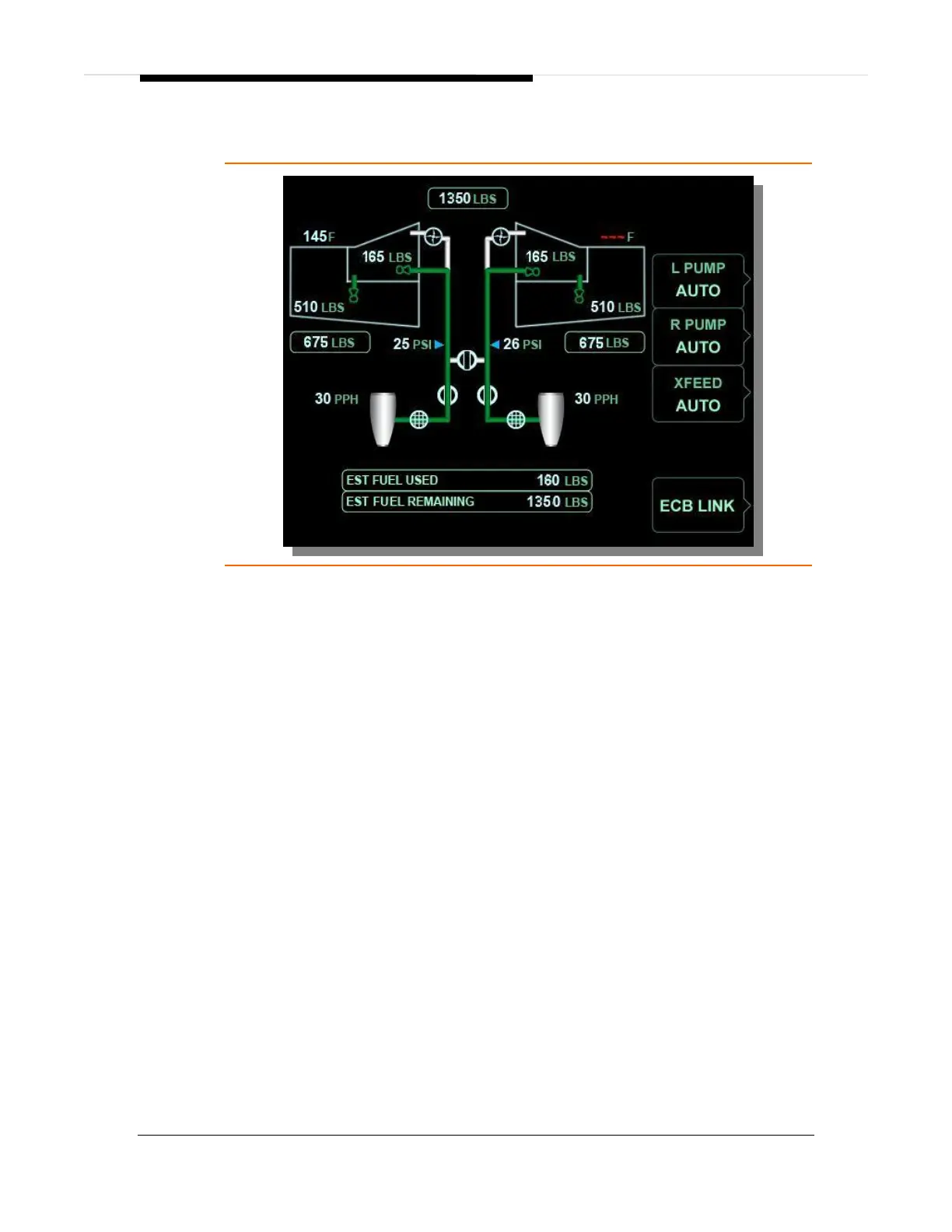Section 7. Fuel Eclipse 5OO Systems Manual
Copyright © — Eclipse Aviation Corporation
126 Version 2.0 April 2007
Should fuel temperature become unavailable red triple dashes will be displayed.
Figure 81. Fuel Synoptic: Temperature Sensor Failure
7.5.11 Return Fuel
The engine fuel pumps supply more fuel than is needed by the FMUs. The excess
fuel is returned to the wings under pressure where it provides motive force to operate
the ejector pumps. Return fuel first enters the ejector boost pumps, which pump fuel
from the sump tanks to the engines. Discharge fuel from the ejector boost pumps
then operates the ejector transfer pumps, which pump fuel from the wing tanks into
the sump tanks.
Since the return fuel has been heated by the fuel/oil heat exchanger in the engine,
the return fuel serves to keep the fuel tank temperature above the fuel freeze point.
7.5.12 Fuel Quantity Gauging System
The fuel gauging system consists of seven capacitance-gauging probes per wing.
Quantity and density information is sent to the ACS where the fuel quantity in pounds
is calculated. The information is then sent to the MFD fuel display and the fuel
synoptic.
A temperature sensor in each sump tank sends sump tank temperature to the ACS
for fuel density calculation. The temperature of both sump tanks is displayed on the
fuel synoptic in Fahrenheit degrees.
The gauging system adjusts fuel quantity based on aircraft pitch and indicates zero
with zero usable fuel (the gauging accurate within +/- 2% with zero pitch).
